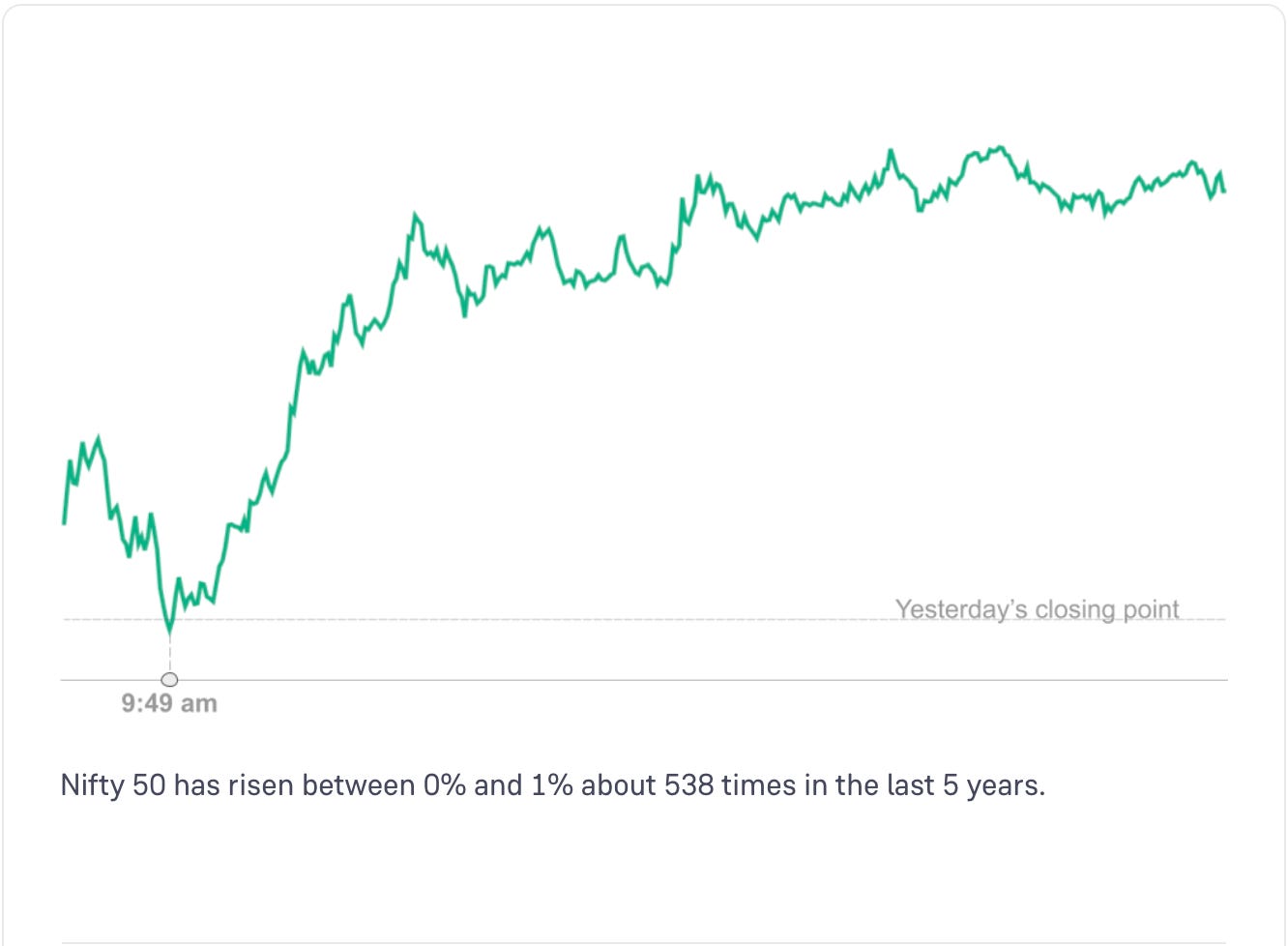Markets opened above Friday’s closing point.
Nifty 50 rose in the first half of the day and remained in a range in the second half of the day.
All sectors’ stocks rose today. IT stocks and realty stocks rose the most.
There are only 4 stocks in the Nifty 50 that fell today. Hence, there are only 4 stocks in the ‘Top Losers’ section.
Global markets: US markets fell. Most European and Asian markets rose.
News
India’s merchandise trade deficit narrowed to $21.88 billion in May (compared to $26.42 billion in April).
India's wholesale inflation fell to 0.39% in May (compared to 0.85% in April).
India’s unemployment rate rose to 5.6% in May (compared to 5.1% in April). The Labour Force Participation Rate fell to 54.8% in May (compared to 55.6% in April).
Domestic passenger vehicle sales fell 0.8% year-on-year to 3.45 lakh units in May.
Three wheeler sales fell 3.3% to 0.54 lakh units while two wheeler sales grew by 2.22% to 16.56 lakh units: SIAM
The National Payments Corporation of India (NPCI) has reduced the response time for UPI transactions from 30 seconds to 10-15 seconds.
Oswal Pumps IPO has been subscribed 1.61 times. Retail Subscription: 1.12 times. IPO closes tomorrow (17 June).
Stocks Updates
Airtel: board approved 18 July as the record date for the final dividend of Rs 16 per fully paid-up share and Rs 4 per partly paid-up share for FY 2024-25.
Hyundai Motor: began production of passenger vehicle engines at its Talegaon plant in Pune district.
NTPC: board will meet on 21 June to consider raising up to Rs 18,000 crore through non-convertible debentures.
Lupin: signed a license and supply agreement with China-based Sino Universal Pharma for manufacturing and marketing Tiotropium DPI, used to treat respiratory conditions, in the Chinese market.
Sun Pharma: the US FDA issued 8 observations after a Good Manufacturing Practices (GMP) inspection at its Halol facility in Gujarat.
ITC: acquired the organic food products company, Sresta Natural Bioproducts Pvt Ltd, for a total of around Rs 472.50 crore.
Word of the Day
Sharpe Ratio
It measures the risk-adjusted return of an investment
It shows how much return an investment gives compared to the return of a risk-free asset (example: a fixed deposit).
It helps investors understand if the extra return is worth the risk they are taking.
A higher Sharpe ratio means the investment gives a better return for the risk taken.
A Sharpe ratio below 1 means an investment gives low returns compared to the risk taken.
6 Day Course
Theme: stock screeners
Day 1: Monday
A large number of investors use screeners to find stocks and investment ideas.
In this week’s course, we will try to understand more about screeners — uses, limitations, advantages, opportunities, etc.
A stock screener has many parameters in it. You can set these parameters and get a list of stocks that match.
Example: show stocks that have a market cap greater than Rs 50,000 cr, a PE ratio less than 20, earnings greater than Rs 2,000 cr, a PEG ratio less than 0.9, belonging to the pharma sector, etc.
There are many screeners available. Many of them are free to use for many parameters, but require a paid plan for going more in-depth.
Featured Question
Q. “why all are investing in gold while there is no commercial or medical value across the globe , why India or other countries investing heavily in gold , even RBI , what is the rationale behind the scene, why RBI allowed loan against gold ,why not other metals,”
Gold has been a form of currency in the world for centuries. It is almost universally accepted in all parts of the world.
Gold has very little practical use. So it does not get used up and finish. The quantity of gold in the world is kind of fixed — it increases slightly as more gold is mined.
In addition to that, gold is not easily corroded or destroyed.
These factors make it an easy choice to use as currency.
This is why gold has historically been used as a currency across the world.
This is why all central banks tend to invest in it too — to maintain a reserve of the oldest (and arguably most stable) currency.
Gold is seen as a safe store of value. It is used as a hedge against currency risk (currency failure).
This is why, in times of geopolitical risk and instability, investors (and central banks like the RBI) buy more gold.
They are trying to diversify their holdings.
RBI allows loans against gold because it can be easily used as collateral.
If the borrower fails to pay back, the gold can be easily sold to recover money.
And since the price of gold is well-known by all, it makes it easy to value the collateral’s worth.
Other metals do not have such qualities. Hence, they are not used as collateral.
Did you like this edition?
Leave a feedback here!






